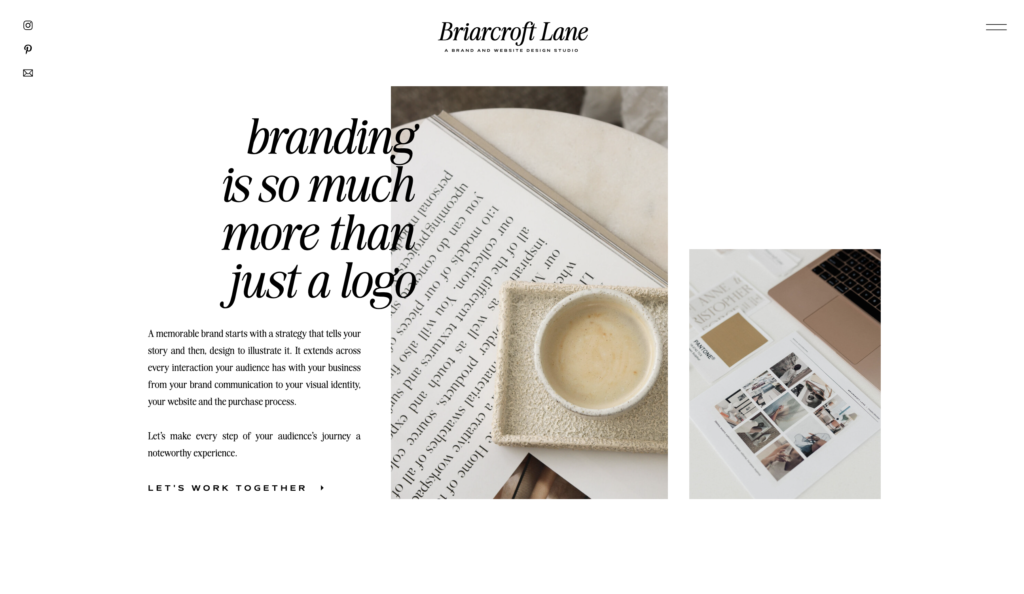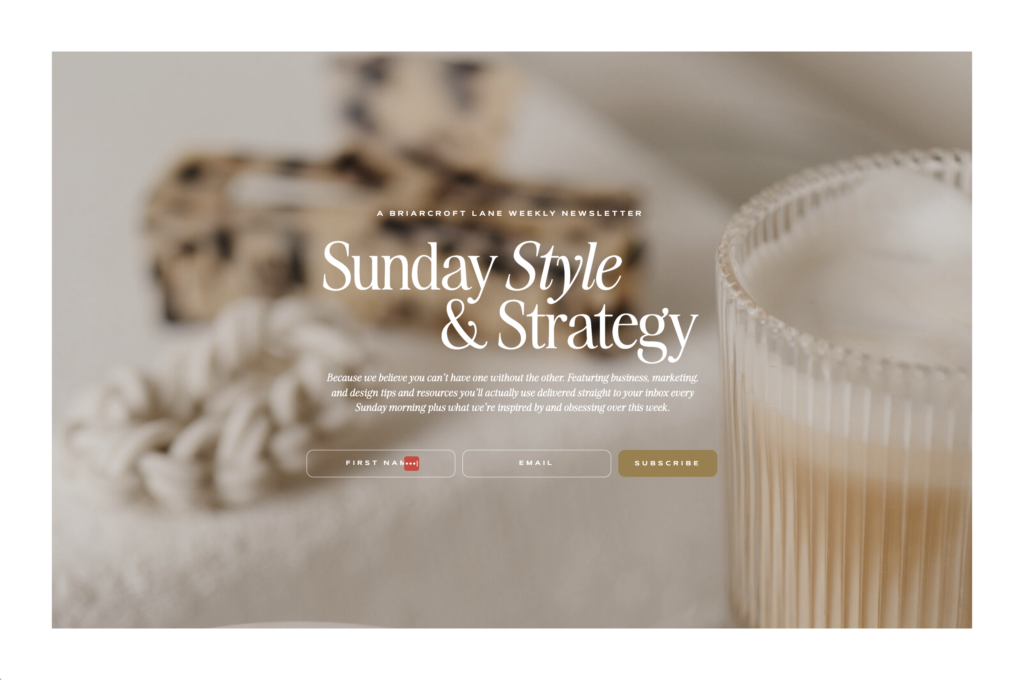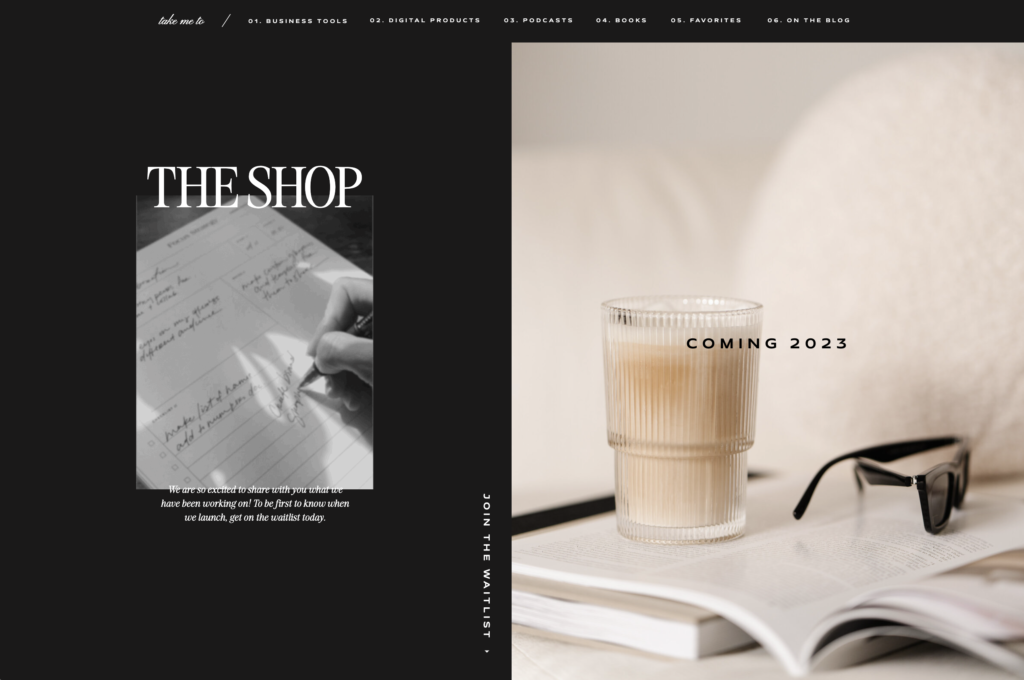You’ve heard it before, but it bears repeating: it doesn’t matter how beautiful your website is if it isn’t designed to drive conversions. A conversion-driven website should be designed with your target audience in mind after researching your competition and crafting a clear and compelling value proposition. It should have a user-friendly layout optimized for conversion and mobile responsiveness. A conversion-driven website performance should be measured and analyzed to help you understand how users interact with your website so you can make adjust and make improvements. Let’s take a look at what defines a website conversion and how to design a website that converts.
What is a Website Conversion?
You know when you are on a website and you click a button that says “learn more” or “sign up”? That action you just took is now considered a conversion. A website conversion is an action taken by a website visitor from a call to action. (How many times do you think I can say action in this blog post?) It could look like signing up for an email newsletter, purchasing a product, inquiring about services, downloading a free resource, or following someone on Instagram. The best part is that as a business owner you get to decide what a conversion means for your website. Throughout your website you will have different calls to action directing your users to take action and engage with you. Below you can find a few examples of calls to action you can find on this very website.



Now that you know what a conversion is and what a call to action is, let’s talk about how to drive conversions with your website design.
How to Design a Website That Converts
There are many ways to design a website that converts, but today we are going to focus on seven of them.
- Define your target audience: Understand who your potential customers are and what they are looking for.
- Research your competition: Analyze what other websites in your industry are doing and identify areas where you can improve.
- Craft a clear and compelling value proposition: Clearly communicate the unique benefits of your products or services.
- Design a user-friendly layout: Make it easy for users to navigate your website and find the information they need.
- Optimize for conversions: Use conversion-focused copy such as headlines and calls to action, to encourage users to take a specific action (e.g. make a purchase) and keep reading.
- Mobile responsiveness: Make sure the website is accessible and functional on all devices, including smartphones and tablets.
- Measure and Analyze: Track the key metrics of your website, such as bounce rate, conversion rate, and user behavior, to help you understand how users interact with your website and make improvements.
.01 Define your target audience
Defining your target audience involves identifying the specific group of people who are most likely to be interested in your products or services. To do this, you can use a variety of methods, such as:
- Demographics: Identify characteristics such as age, gender, income, education level, and occupation.
- Psychographics: Identify personality traits, values, interests, and lifestyles.
- Geographic: Identify where your target audience is located.
- Behavioral: Identify how your target audience behaves, such as their purchasing habits and what motivates them to buy.
- Market research: conduct surveys, focus groups or interviews to gain insights into your target audience’s needs, wants and pain points.
- Analyze your existing customer base: Look at the characteristics of your current customers to identify patterns and trends. Look at your reviews or testimonials to see how they describe their desires and struggles.
Once you have a good understanding of your target audience, you can create a buyer persona, a fictional representation of your ideal customer, that will help you make better decisions about your product or service, marketing and sales strategy.
It’s important to note that your target audience may change over time as your business evolves, so it’s important to regularly re-evaluate and update your target audience definition.

.02 Research Your Competition
Researching your competition involves analyzing the strategies and tactics used by other businesses in your industry to identify areas where you can improve. Here are a few ways you can use to research your competition:
- Analyze their websites: Look at the design, layout, and content of your competitors’ websites to see what they are doing well and what they could improve.
- Study their social media presence: Look at how your competitors are using social media to engage with customers and promote their products or services.
- Check out their online reviews: Look at the reviews and ratings of your competitors on sites like Google, Yelp, and TripAdvisor to see what customers are saying about them.
- Look at their SEO: Use tools like Ahrefs or SEMrush to research the SEO of your competitors, this will give you an idea about the keywords they are targeting and how well they are ranking for them.
By researching your competition, you can identify areas where you can improve your own business and gain a competitive advantage.
.03 Communicate your unique value proposition
A value proposition is a statement that clearly communicates the unique benefits of your products or services, and how they solve your customers’ problems or meet their needs. A clear and compelling value proposition can help you stand out from your competitors and attract more customers. Here are a few steps you can take to create a clear and compelling value proposition:
- Identify your unique selling points: Determine what makes your products or services unique and how they are different from your competitors.
- Use persuasive language: Use language that is clear, concise, and persuasive to communicate the benefits of your products or services.
- Make it specific: Instead of making general statements, be specific about the benefits of your products or services.
- Test and iterate: test different versions of your value proposition with a small group of potential customers to see which one resonates the most.
- Incorporate it into your branding: Use your value proposition as a foundation for your branding and messaging.
A good value proposition should answer the question: “Why should I choose your product or service over your competitors?”
Here is an example of a clear and compelling value proposition: “Our product XYZ is the most efficient way to clean your house, it uses 70% less water and detergent than other cleaning methods, it’s also easy to use and guarantees a spotless cleaning every time.”
Keep in mind that creating a value proposition is an ongoing process, and you should regularly review and update it as your business evolves and your customers’ needs change.

.04 Designing a user-friendly layout
A website that converts is designed with the user in mind. This means ensuring that users can find what they are looking for quickly and easily without having to click through multiple pages or scroll endlessly. To make sure your site is easy to navigate, design your website so that users can complete their desired action in as few steps as possible—the fewer clicks they have to make, the better! A good place to start optimizing your user experience is your homepage. You’ll want to ensure your homepage is a roadmap to the rest of your website. Your homepage should give your visitor an idea of all the different sections of your website they can explore.
.05 Optimizing website copy to convert
While the design is what will get someone to look at your website, the words, also known as your website copy, is what will keep them there and inspire them to take action. Optimizing your website copy to connect with your audience and answer any questions they might have about your website is a great way to set yourself up for success. Your website should answer five basic questions someone visiting your website will have: who are you, what do you do, who is it for, why does it matter, and what should I do next? Answering these questions is imperative in building a website that converts.
To answer the question what should I do next?, you’ll want to tell your visitor which step to take by utilizing calls to action. Think about the main action you want them to take for each page of your website and make sure you use calls-to-action to direct them there. For example, if you are a service-provider, from your homepage, you can direct your visitor to your about page, your services page, your portfolio, your blog, or your contact page. You could also prompt them to join your email list or download a free resource. Don’t forget to utilize your website copy to show them what is in it for them. What do they gain from joining your email list? Why should they download your freebie?

.06 Responsive on All Devices
When designing a website that converts, its essential to focus on mobile optimization. No matter what type of device visitors are using—desktop computer, tablet, or smartphone—your site should look great on each one. This means your visitors can have an enjoyable user experience no matter which device they use. Plus, since Google rewards sites that are optimized for mobile devices, ensuring your website is responsive can help you improve your search engine rankings as well. Talk about a win win!
Pssst. I specialize in Showit websites for many reasons BUT one of the biggest reasons is that I can easily optimize the design to look just as great on mobile as it does on desktop.
.07 Measuring and Analyzing Your Website Performance
Measuring and analyzing your website performance can help you identify areas for improvement and optimize your site to drive more conversions and revenue. Here are a few methods you can use to measure and analyze your website performance:
- Use web analytics tools: Tools like Google Analytics can help you track key metrics such as website traffic, bounce rate, conversion rate, and revenue.
- Monitor website speed: Use a tool like Google PageSpeed Insights to measure the load time of your pages and identify any areas that may be slowing down your site.
- Track user behavior: Use heat mapping tools like Crazy Egg to see how users interact with your site and identify areas where they may be struggling.
- Measure lead generation: Track how many leads your website is generating, such as contact form submissions or newsletter signups, to see how well it is performing in terms of lead generation.
- Analyze your organic traffic: Use tools like Google Search Console to see how well your site is performing in organic search and identify opportunities to improve your rankings.
By regularly measuring and analyzing your website performance, you can identify areas for improvement and make data-driven decisions to optimize your site and drive more conversions and revenue.

Designing a website that converts takes time and effort but can pay off in spades if done correctly. Focus on optimizing user experience by defining your target audience, researching your competition, crafting a clear and compelling value proposition, designing a user-friendly layout, optimizing website copy to convert, ensuring mobile responsiveness, and measuring and analyzing website performance. By following these seven tips, you’ll be well on your way towards creating an effective conversion-driven website that will allow you to connect with your audience and convert them to customers or clients.
Did you find this post helpful? Send me a DM on Instagram or email me. I’d love to hear from you!
MODERN YET TIMELESS SHOWIT WEBSITE DESIGN FOR SMALL BUSINESSES
If you know that its time to create a conversion-driven website but don’t have the time to do it yourself or would like some guidance? I’d love to help! Through collaborative brand strategy, strategy-backed brand design, and conversion-driven website design, I work with passionate female founders just like you to intentionally build brands and online presences that tell a story to connect with your ideal audience on an emotional level, convert them to customers, and leave them thinking about you long after they last interacted with your brand. You can learn more about services here.
Need a new website that converts but not enough time for a full-on custom website design project? Learn how we can strategically customize a website template of your choice without sacrificing quality or conversion in less than one week with The Brand Experiences here.
xo Christiana